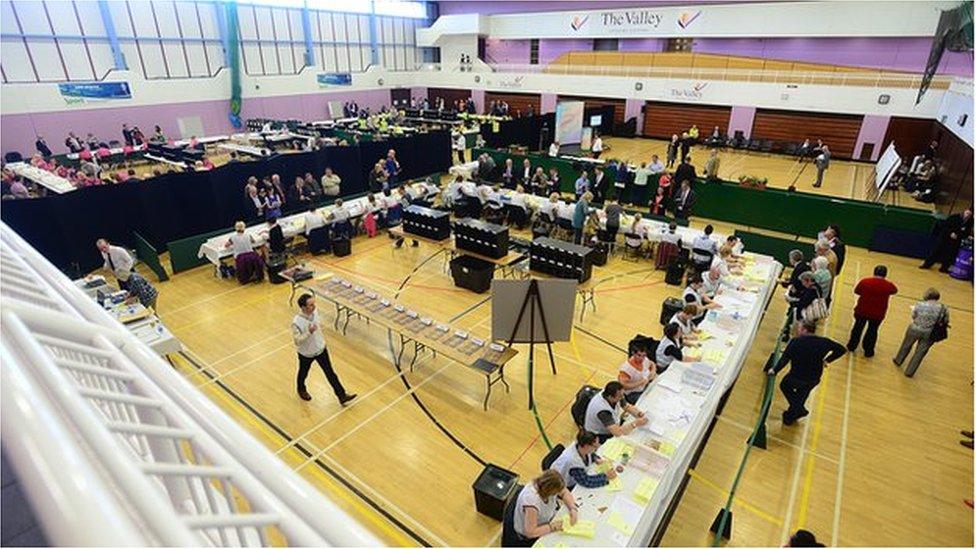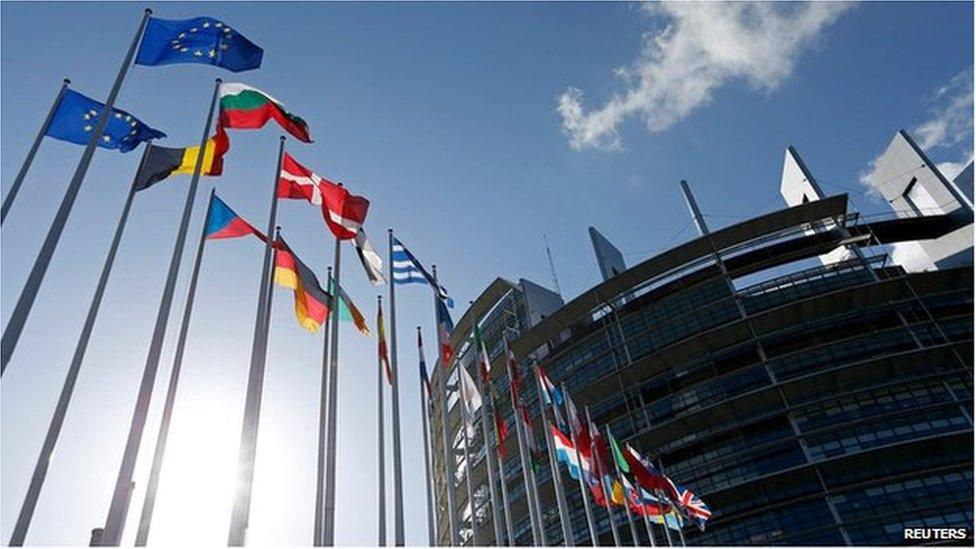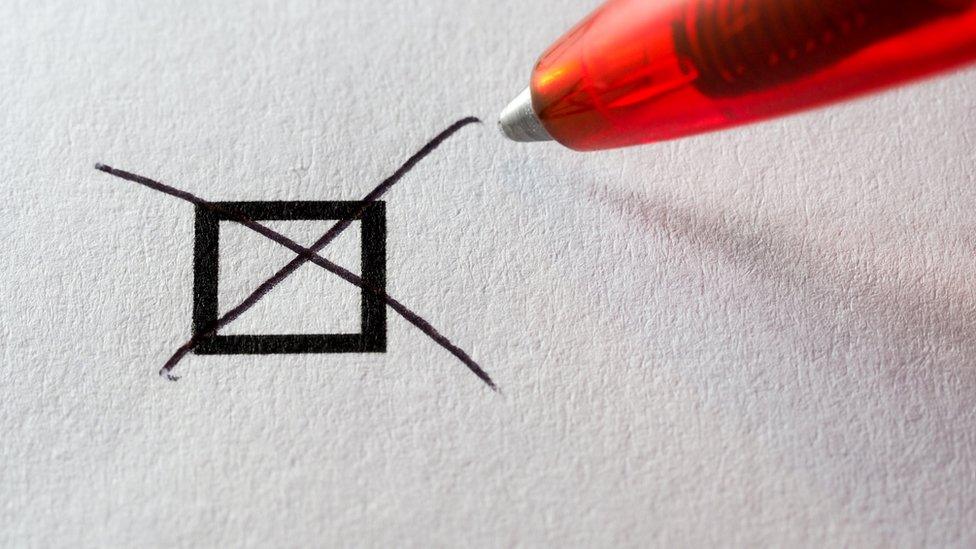Why do votes take so long to count in Northern Ireland?
- Published
How does the single transferable vote system work?
Election counts in Northern Ireland can often seem to drag on forever.
Recent local government elections were held on a Thursday, but while all the English results were in by Friday evening, it was almost 23:00 BST on Saturday before things finished up in Northern Ireland.
At the last European election in 2014 the count took much longer than expected and the delay was criticised by the Electoral Commission.
Part of the reason for this is the voting system used in Northern Ireland - single transferable vote, or STV - and when it comes to European elections another factor is that votes in Northern Ireland are not counted on Sundays.
So while the rest of Europe will start counting after the last polls close at 22:00 BST on Sunday, Northern Ireland's count doesn't begin until Monday.
Why does Northern Ireland use STV?
One of the main reasons STV was introduced was to ensure a broad range of both unionist and nationalist candidates were elected, according to Dr Christopher Raymond from the school of politics at Queen's University Belfast.
"STV is designed to ensure a good chance of representation for both sides of the community divide," he said.
"The idea is that a system electing more than one person per constituency increases the chances that unionists are elected and nationalists are elected as well.

The count process in 2014 dragged into a second day
"STV was meant to ensure you got fair representation of the two main communities, but Alliance and the Greens and so on benefited."
How does STV voting work?
STV is designed to make sure each constituency in an election has a group of representatives who reflect the diverse opinions of voters in that area.
Each voter is able to vote for every candidate on the ballot paper, putting a number one beside their favourite, a number two beside their second favourite and so on.
They can vote for as many or as few candidates as they like.
How does counting work?
This is where things get a bit complicated.
To get elected a candidate needs to meet the quota, which is calculated based on the number of seats up for grabs and the number of total votes cast.
Counting starts by adding up all the number one - or first preference - votes. If anyone gets more number ones than the quota then they are elected.
If they have more number ones than they need to reach the quota then their extra votes are passed on to each voter's second-favourite candidate.
Unless all the seats have been filled by this stage - which is extremely unusual - the candidate with the least number of votes is knocked out.
The people who voted for this candidate have their votes moved to their second-favourite candidate.
This process continues until all the seats are filled.
Scotland uses electronic counting machines to count STV ballots in local elections, but these are not used in Northern Ireland.

Will the count be quicker this time than in 2014?
It is hard to tell, but Northern Ireland's Chief Electoral Officer Virginia McVea is hopeful.
"We will be trying our best with double the staff from 2014 to move through that on Monday if it is possible," she told BBC News NI.
"It depends on turnout and how the votes are cast, so it could possibly go into Tuesday depending on those factors."
Why is there no counting on a Sunday?
Traditionally, votes have not been counted on Sundays because of observance by Northern Ireland's Christian population of keeping the Sabbath as a day of rest.
Another factor is that the STV process is long and complicated.
It is difficult to run STV counts overnight because staff begin to flag by mid morning and this may mean bringing in new staff or having a break.
But Ms McVea said she has asked for the question of whether counting should take place on Sundays in future to be included in the Electoral Commission's post-election survey.
It could then be put out for consultation.
Why is STV used?
There are a number of arguments in favour of STV, including that it puts a lot of power in the hands of the voters.
In some other proportional voting systems people vote for parties, and the parties then decide which of their candidates fill the seats.
This system is used in the rest of the UK for European elections.
But STV allows voters to list individual candidates in order of preference.
It also allows people to give their first preference vote to a candidate who they suspect will not be elected, safe in the knowledge their second, third or fourth-favourite options will still get their vote once their first-preference candidate is knocked out.

First past the post is still used for Westminster elections
Are there any drawbacks?
If you are scratching your head trying to keep up with the results coming in, rest assured you are not alone.
"The most obvious drawback is how confusing it can be for voters who are not all that engaged with everyday politics keeping track of a long list of names," Dr Raymond said.
"It is quite information heavy in terms of what it requires of voters.
"It is also very complex to tabulate the results.
"It is very confusing for voters sitting on the sidelines waiting for results to come in and expecting them to come in at the same speed as a first past the post election."
But no matter how laborious some counts can be, take some solace in the fact that they are quicker now than they were in the past.
"It used to be in some cases you would get counts that would take weeks to decide," Dr Raymond said.
Avoiding that outcome might just be something all politicians can agree on.